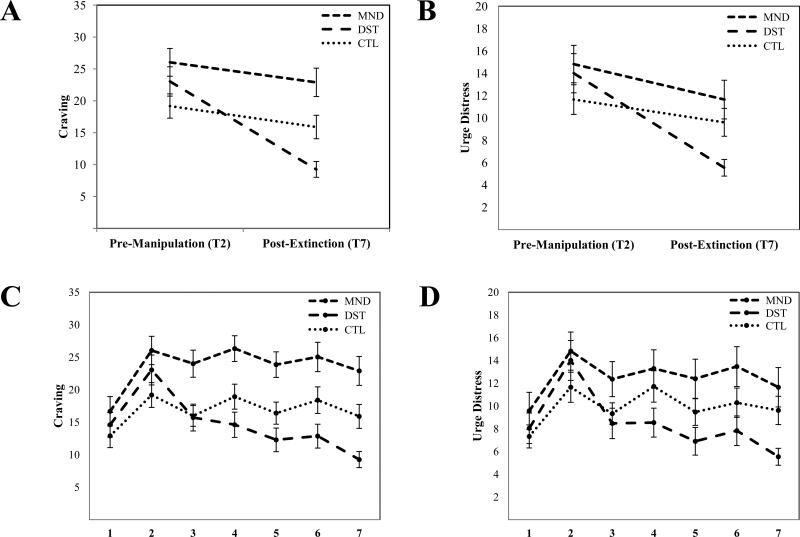Figure 2.
Effects of mindfulness, distraction, and no strategy on subjective craving for alcohol and urge distress. Panels A and B depict the omnibus 3 (condition: MND, DST, CTL) 9 2 (time: prior tomanipulation of coping strategy and at the end of the experimental period). Panels C and D show full-resolution depictions of each group at all time points across the protocol (statistical significance for changes presented in Tables 1 and 2). Neutral cues were presented at time point 1, alcohol cues were acutely presented at time points 2, 4, and 6, and unreinforced exposure to alcohol cues (extinction) took place at time points 3, 5, and 7.MND, mindfulness group; DST, distraction group; CTL, control group; T, time point.

